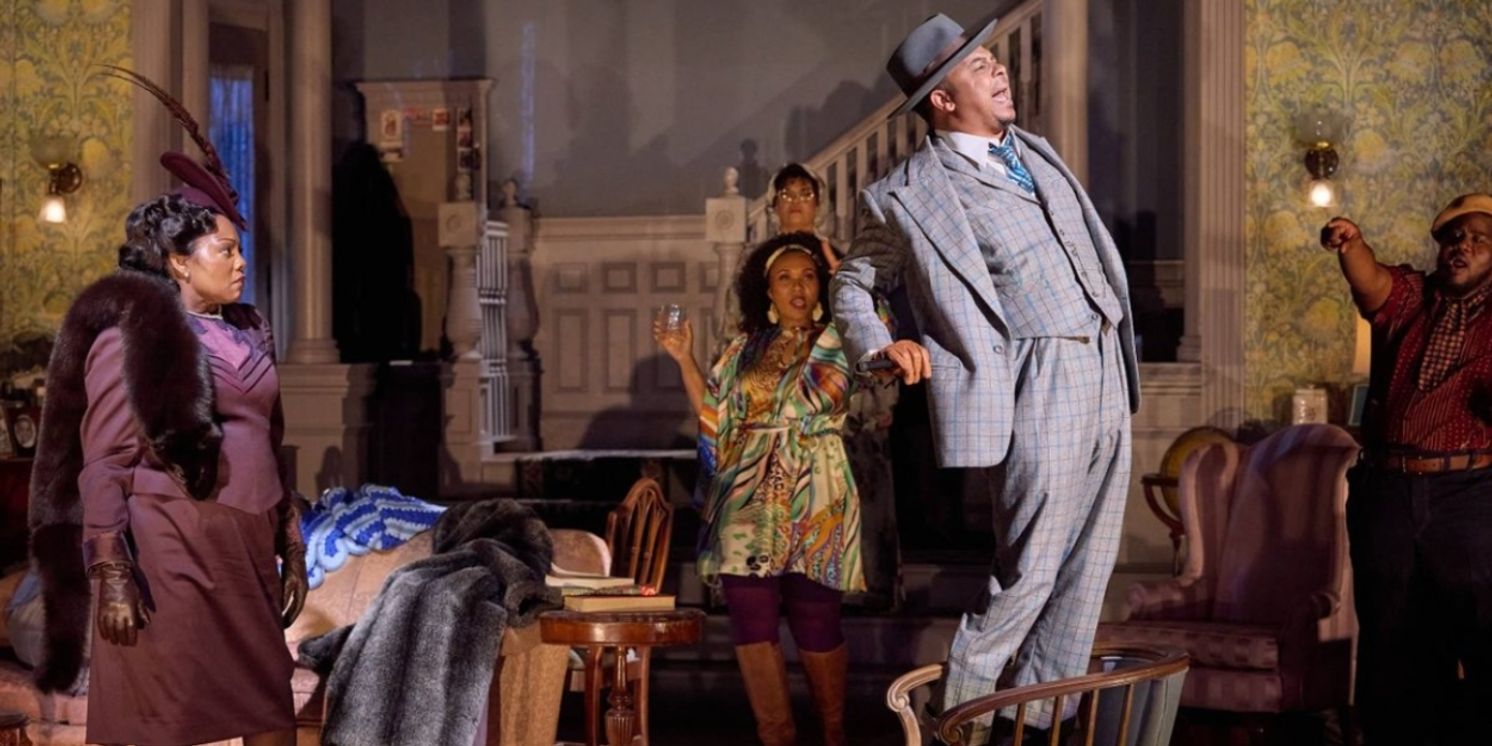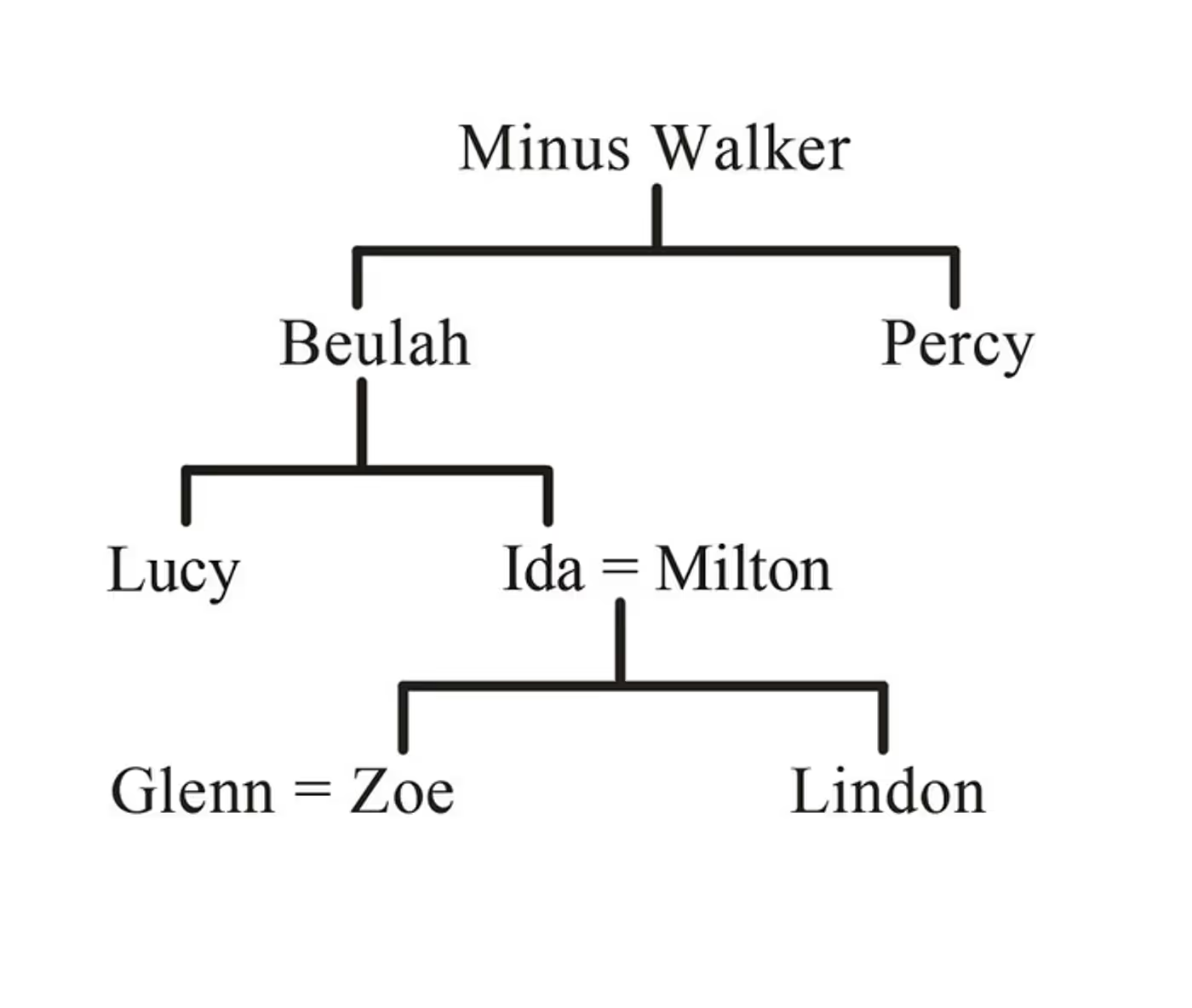Review: THIS HOUSE at Opera Theatre Of St. Louis
World premiere at OTSL runs through June 29

There are great creative forces gathered at Opera Theatre of St. Louis to assist at the birth of the company’s forty-fifth world premiere—This House. We’ve seen the work of all of these folks before.
- Ricky Ian Gordon composed the richly evocative scores for OTSL’s The Grapes of Wrath and 27 (that beautiful eccentric piece about Gertrude Stein). The New York Times has characterized Gordon’s music as having a
“bursting effervescence infusing songs that blithely blur the lines between art song and the high-end Broadway music of Leonard Bernstein and Stephen Sondheim."
- Playwright Lynn Nottage has two Pulitzers and a MacArthur Genius Fellowship. We’ve recently seen her plays Clyde’s (The Rep), Sweat (Black Rep), and Intimate Apparel (New Jewish). She and Gordon have collaborated before, adapting the latter play into an opera.
- Stage Director James Robinson has long been OTSL’s brilliant Artistic Director. (Alas we are losing him to Seattle.) Last season he directed that wonderful Galileo Galilei.
- Set Designer Allen Moyer has created many superb sets for OTSL—most recently working with Mr. Robinson on Galileo Galilei.
- Daniela Candillari, now in her fourth season as OTSL’s Principal Conductor, garners international praise. She’s another brilliant talent.
Into this veteran team—so familiar with near perfection—there is added one young, untested voice: Ruby Aiyo Gerber is the daughter of Lynn Nottage and her husband Emmy-winning film-maker Tony Gerber. She and her mother wrote the libretto for This House.
This is the story of a house in Sugar Hill, Harlem. That’s the place that Duke Ellington’s “A-train” takes you to. Designer Allen Moyer gives us a beautiful old brownstone, a little stylized but perfectly suitable and richly detailed inside. A turntable permits two views—outside on the stoop and in the dimly-lit living room. The turntable gives swift, graceful scene changes but of course it cuts the potential acting space nearly in half. This allows plenty of room for the two-character scenes on the stoop, but it gets very cramped for the heavily populated scenes indoors where most of the action takes place.
Minus Walker, a former share-cropper, worked relentlessly for decades, and in 1919 he bought this house. Since then four generations of Walkers have lived here. They’ve left their memories of struggle and love and betrayal and violence and survival. They’ve left their ghosts. The house itself is the central character in this story. In its decaying dotage we hear it breathe; we hear the water trickling in the pipes, we hear the floors and stairways creak. Ricky Ian Gordon makes all this audible to us in strange polychords—chords in different keys overlayed one on another—as the cast intones a soft, mysterious vocalise. If only walls could speak. These do. They whisper to us.
Young Zoe (Brianna Hunter) returns after some years to her childhood home. She brings her husband Glenn (Brad Bickhardt)—and, in her womb, the next generation of Walkers. Zoe’s dream is to live here and to convert much of the vast old house into condos. But, of course, she must convince the current residents to accept this plan.
We meet her mother, Ida (Adrienne Danrich) and her twin brother Lindon, an artist (Justin Austin). They seem locked in the past and totally unreceptive to Zoe’s plan.
But who are those other folks lurking in the darker corners? They seem not to notice what’s being acted out before them. But from time to time they step into the scene and interact with one another. Aha! They are the ghosts of past generations:
- Ida’s mother Beulah (Kristy Swann)
- Ida as a young woman (Brandie Inez Sutton)
- Ida’s musician husband Milton (Sankara Harouna)
- Ida’s activist sister Lucy (Aundi Marie Moore)
- Ida’s spendthrift brother Percy (Victor Ryan Robertson)
All of the Walkers, new and old, seem opposed to any change. They cling to the “legacy” of the family in this place. But as we rapidly (and sometimes confusingly) bounce from generation to generation, from decade to decade, we begin to wonder “what legacy?” Since the admirable efforts of patriarch Minus we see the family yielding to significant sins—shamefully reckless gambling and spending, murder, infidelity, abandonment. Their one praiseworthy “legacy” is survival as a family.
The cast is filled with exemplary voices—all fine actors. The music is varied—bits of swing, rag-time, jazz, and pop song as befit the different eras. Throughout there are passages that seem almost random—the orchestra working its own strange path, often quite beautiful but bearing no relation to the voices. And ever and anon that haunting “breathing” of the house itself.
Most of the time, at least throughout Act 1, there was hardly a melody rearing its head. We were, I thought, stuck in recitative mode. And the lyrics are not lyrics, but merely sung dialogue. In Act 2 things get richer: there are love duets with real melody and deep emotion. And when Lindon’s gay lover Tom (Christopher Pursell) arrives to urge Lindon to come with him to Spain … Wow!! Things get suddenly OPERA! I never realized how gorgeously dramatic the word “Valencia!” is. When sung with such an astonishing voice as Mr. Pursell’s it is a very fanfare—it’s almost an opera in itself!
Toward the end there is a quite glorious aria—a threnody really—by Mama, where Ms. Danrich fills the hall with power and feeling.

There is much to admire in this new work. But there are some shortcomings. I mentioned the dearth of melody and poetry—at least to my taste. But there is also confusion and crowding. It takes a while to sort out who these folks are and how they are related—and whether they are alive or dead. (Study the family tree.) The hop-scotching back and forth in time is just a little dizzying.
And there are simply too darned many bodies on stage. I know we want to sense that these ghosts are permanently here, but ten characters, with often seven or eight of them on stage at the same time (some just hovering in the shadows) … Well, it just clutters and confuses. And most of these people are filled with hostility and are not particularly likeable.
This House is a commissioned work. The project was initiated by Stage Director Robinson, who had worked with Mr. Gordon before and had long admired Ms. Nottage. His only suggestion was that the new opera should be on an original subject—not adapted from an existing play. And yet, here we are: This House was indeed based on a play that Ms. Gerber wrote as an undergraduate at Brown during the Covid shut-down.
Ah, well.
It has large ambitions. It is really a saga, delving into generations of a family that seems both cursed and blest. It is far more a success than otherwise, so I congratulate Ms. Gerber for her first bold step into the big-time, and look forward to even more impressive work from her in future. Let’s see a few more Emmys and Pulitzers on the family shelves.
This House continues at Opera Theatre of St. Louis through June 29.
(Photos by Eric Woolsey)
Reader Reviews

Videos

